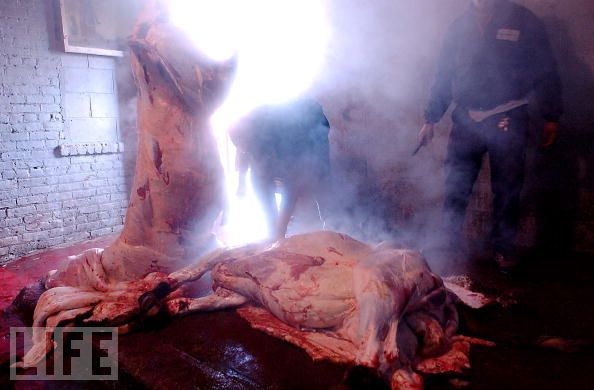In America money has influence over so many different aspects of our lives. It range's all the way from your education to your health. The health of lower income and minorities are getting worse and worse due to their eating habits. The pricing of food plays a big role in that. The governments subsidizing of corn is creating an epidemic of high fructose corn syrup being added to all types of food we eat. All the high fructose corn syrup and other energy dense foods we eat is a big part of why the obesity rate in America is so high. That obesity rate is why we have such a staggering number of people suffering from type 2 diabetes, especially children and teenagers. That number is even higher when it comes to minorities. One reason for that is those unhealthy foods are cheaper, since that is all they can afford, that is what they wind up eating.
The pricing of our food plays such an important part when we make the choice of what to eat. The fact that the cheapest foods are the unhealthiest is why our health problems continues to grow. Why is it that the higher calorie, energy dense processed foods are cheaper than the whole foods. You would think that since it takes so much more machinery, chemicals, and manpower to process food it would be more expensive than whole foods such as fruits and vegetables which only require growing and picking. In, “The Omnivore's Dilemma” by Michael Pollan, he says, “ One reason that obesity and diabetes become more prevalent the further down the socioeconomic scale you look is that the industrial food chain has made energy dense foods the cheapest foods in the market, when measured in terms of cost per calorie. A recent study in the American Journal of Clinical Nutrition compared the 'energy cost' of different foods in the supermarket. The researchers found that a dollar could buy 1.200 calories of potato chips and cookies; spent on a whole food like carrots the same dollar buys only 250 calories. On the beverage aisle, you can buy 875 calories of soda for a dollar, or 170 calories of fruit juice from concentrate. It makes good economic sense that people with limited money to spend on food would spend it on the cheapest calories- fats and sugars – are precisely the ones offering the biggest neurobiological rewards.” So because they only have limited money to spend they try to get the biggest bang for their buck. That bang puts them in the high risk category for diabetes and other diseases. As shown in Robert Kenner's movie, “ Food Inc.”, many lower income families rely on the fast food restaurants dollar or value menu to feed their family because that is all they can afford. Children wind up eating unhealthy calories day after day which is why type 2 diabetes is so prevalent in younger people today. We fill up on these foods because they are cheap. Pollan writes, “ When food is abundant and cheap, people will eat more of it and get fat.” Too bad we don't have healthy cheap food.
The government needs to acknowledge their part in the obesity epidemic. Changes need to be made to stop our dependency on products such as high fructose corn syrup, fats, and sugars. America is capable of growing and producing so many healthy fruits, vegetables, and whole foods that we should make them affordable. That way everyone no matter how much money you make is able to eat healthily and avoid food related diseases. There is a quote in Pollan's book that sums up why that change needs to come. “ Very simply, we subsidize high fructose corn syrup in this country but not carrots. While the surgeon general is raising alarms over the epidemic of obesity, the president is signing farm bills designed to keep the river of cheap corn flowing, guaranteeing that the cheapest calories in the supermarket will continue to be the unhealthiest.”
Subscribe to:
Post Comments (Atom)



No comments:
Post a Comment